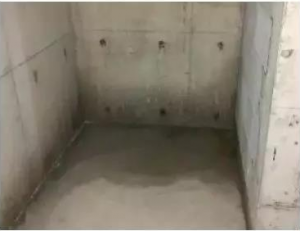How to deal with the waterproof problem of the newly expanded room during the basement rebuilding and expansion process?
date: 2019-12-13 20:53:55Source: RG JIAYEViews: 936

The basement is located below the outdoor ground and is surrounded by soil. It is affected by groundwater pressure for a long time. The common leakage site in the basement of civil buildings is the construction joint area, which is generally 300-500mm away from the floor. Summarize the reasons for leakage in this part: poor concrete construction quality, cracks caused by excessive shrinkage; concrete is not compacted, and the construction joints are not properly sealed; the waterproof layer of the second stubble of the outer wall waterproof layer is opened and shed, and the waterproof function is lost Or the quality of the waterproof material is poor.
Leakage of construction joints in underground outdoor walls is mainly manifested by water seepage and wetness around the outer peripheral wall of the roots. If there is backfill soil in the basement floor and there is standing water in the backfill soil, siphoning will also occur on the wall.
For the leakage of construction joints in underground outdoor walls, repairs can be performed both indoors and outdoors. Compared to outdoor maintenance, indoor maintenance is the most economical.
The specific method is as follows:
1. First remove the water seepage inside the basement, remove the plaster layer of the construction joint from the basement, and clean up the base layer;
2. Tick the V-shaped groove inward along the construction seam, and fill in the groove to fill up and smooth out the leakage;
3. Distribute holes along the two sides of the construction joint of the structure. The points of the holes are 30-50mm away from the cracks. Drill holes at an angle of 45 ° to the structure. A grouting rod is buried in the drilled grouting hole, and the grouting machine is connected to grout into the structure;
4. After the grouting is finished, plug the grouting hole with a plugging plug, and then spread the infiltration crystals on the surface of the leakage area and cure it, and then paint the waterproof mortar as the surface impermeability and moisture-proof layer. According to the needs of the owner, the entire wall and floor can be made impervious and moisture-proof layer.
The underground outdoor wall has serious leakage, and the exterior has excavation conditions. At the same time, if the owner requires maintenance from outside, it can be repaired from outside. This method has a large amount of engineering, high cost, a large risk factor, can find the weak part of the waterproof layer, and can cure the leakage at one time.
The specific method is as follows:
1. Excavate earthwork along the outer wall, remove the original thermal insulation layer and waterproof layer of the underground outdoor wall to the solid concrete structure layer (reserved about 15cm coils below the construction joint, so that new coils can be overlapped with it), and clean the outer layer of the base. Clean, pick V-grooves along the construction seam, then fill and smooth with leak plugs, and take safety protection measures when working in the pit;
2. Brush the base treatment agent on the wall surface, re-apply the waterproof layer of the coil material, and build the retaining brick wall while restoring the insulation while restoring the insulation.








